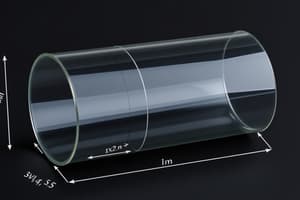Podcast
Questions and Answers
A high elasticity of demand suggests that a small price cut results in a small volume increase.
A high elasticity of demand suggests that a small price cut results in a small volume increase.
False (B)
Elastic markets are characterized by an elasticity of demand greater than one (1).
Elastic markets are characterized by an elasticity of demand greater than one (1).
True (A)
Every time a price change is contemplated, volume hurdles should be the last line of analysis.
Every time a price change is contemplated, volume hurdles should be the last line of analysis.
False (B)
Volume hurdles are irrelevant for marginal price change decisions.
Volume hurdles are irrelevant for marginal price change decisions.
Elasticity of demand measures the changes in volume delivered with a change in price.
Elasticity of demand measures the changes in volume delivered with a change in price.
Raising prices to cover fixed costs is justified from a profit maximization viewpoint.
Raising prices to cover fixed costs is justified from a profit maximization viewpoint.
Inelastic markets tend to favor price decreases to improve profitability.
Inelastic markets tend to favor price decreases to improve profitability.
Executives can use elasticity of demand to predict the expected volume change from a price change.
Executives can use elasticity of demand to predict the expected volume change from a price change.
A measured elasticity of demand below one indicates elastic markets.
A measured elasticity of demand below one indicates elastic markets.
Inelastic markets are characterized by a large change in price having a large effect on quantity sold.
Inelastic markets are characterized by a large change in price having a large effect on quantity sold.
Volume hurdles provide the final word on pricing decisions.
Volume hurdles provide the final word on pricing decisions.
An increase in volume associated with a price reduction will always improve profitability.
An increase in volume associated with a price reduction will always improve profitability.




